Each fall as the weather starts to turn and farm clean up begins in earnest, I face two of my least favorite, but most necessary, tasks: digging up the dahlias and planting fall bulbs. Neither are fun, at least in my opinion.
At this time of year, all I want to do is curl up by the fire and drink coffee with a good book. The last thing I want to do is put on full rain gear and lug heavy crates of bulbs and tubers around our muddy fields.
But it’s the only way to ensure we’ll have loads of beauty in the coming season.
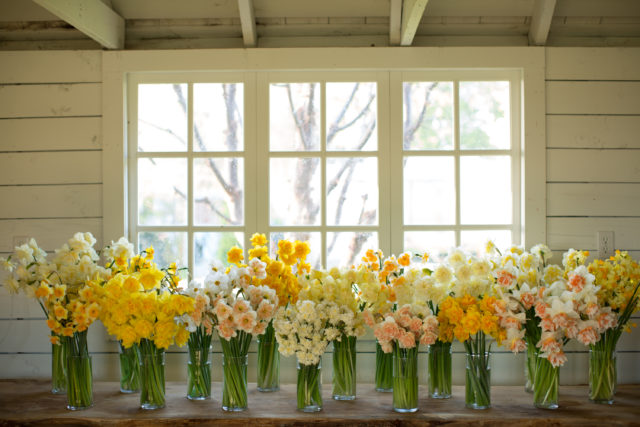 I try to approach both tasks with a positive attitude and be present to the fact that they are a gift to my future self.
I try to approach both tasks with a positive attitude and be present to the fact that they are a gift to my future self.
After a long dismal winter, I will be so grateful for all the effort that I put in this fall. There’s nothing more wonderful than being greeted by flowers in early spring.
The first couple of years we were flower farming we didn’t plant bulbs because they were always an afterthought. I would run out of steam at the end of the season and inevitably miss out on all of the great varieties.
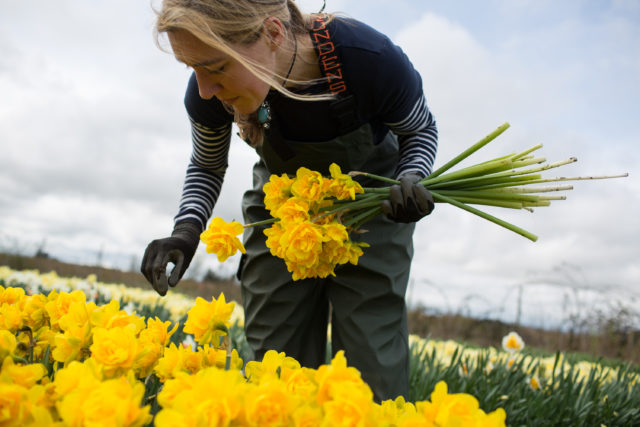 One of the other reasons I resisted planting bulbs is because they were a financial investment and we didn’t have very much money. But after three or four springs of kicking myself for not having invested the previous fall, I finally overcame my hesitation and gave bulbs the chance they deserve.
One of the other reasons I resisted planting bulbs is because they were a financial investment and we didn’t have very much money. But after three or four springs of kicking myself for not having invested the previous fall, I finally overcame my hesitation and gave bulbs the chance they deserve.
The first year I planted a few hundred tulips and five varieties of narcissus. They bloomed so abundantly and were so well received by our customers that I quadrupled the following year.
It’s only increased since then and now I approach the task of planting spring-flowering bulbs after the first fall frost as a necessity, not a burden.
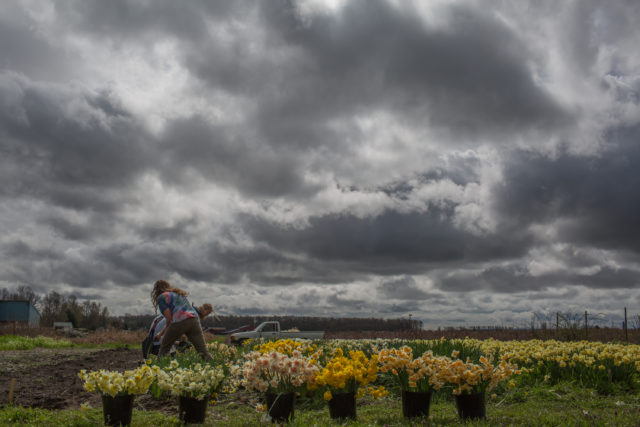
Narcissus
Out in the field we have a HUGE patch of narcissus that come back every season which I inevitably add to each year. Additionally, we also plant thousands of tulips, hyacinths, and other spring bulbs both in our unheated tunnels (for super early blooms) and also outside in the fields.
This makes it so we can start harvesting flowers in early March and continue all the way through Mother’s Day.
Without bulbs there would be no spring flowers. Even though it can be easy to want to skip tucking some bulbs in the ground this fall, if you can make yourself do it, you will be so happy that you did come spring.
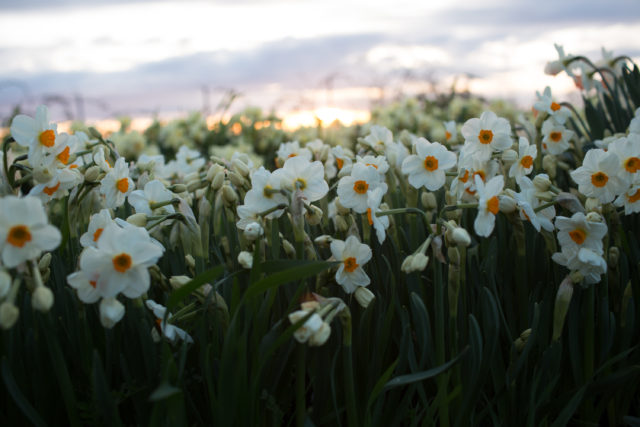 If you rely on the local hardware store and garden center, the bulb scene is pretty boring and limited to bright, clear colors and standard forms. Occasionally, you’ll find a few treasures. Sometimes even Costco has a handful of awesome varieties!
If you rely on the local hardware store and garden center, the bulb scene is pretty boring and limited to bright, clear colors and standard forms. Occasionally, you’ll find a few treasures. Sometimes even Costco has a handful of awesome varieties!
But for the most part, don’t bet on finding the good stuff at the big box stores.
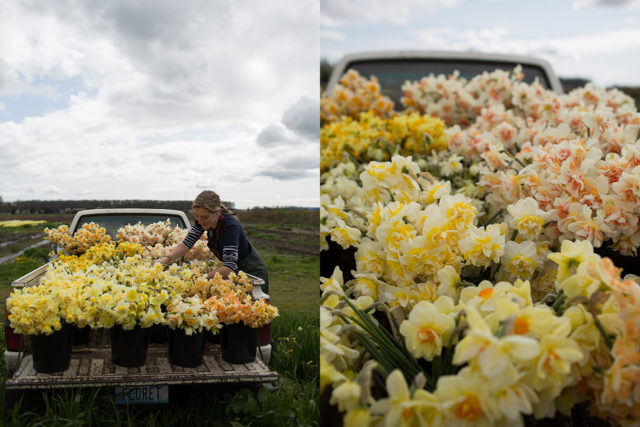 For the best selection and the most unique varieties you’ll want to explore your mail-order options, both from print catalogs and online shops. There are some wonderful sources for specialty bulbs, but the fantastic selection is only available to those who shop early.
For the best selection and the most unique varieties you’ll want to explore your mail-order options, both from print catalogs and online shops. There are some wonderful sources for specialty bulbs, but the fantastic selection is only available to those who shop early.
If you want the good stuff, don’t delay!
Note: If you do stock up on bulbs early, it is best to wait until after the first fall frost to plant them. Until you’re ready to plant, you can keep the bulbs in their ventilated bags, but just be sure to store them in a cool, dry place with good air circulation.
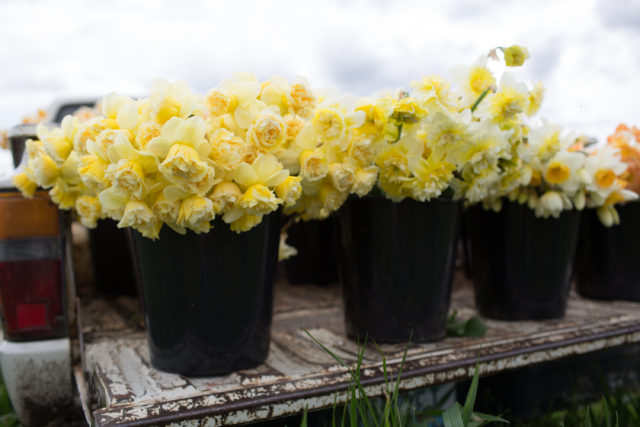 We’ve been growing narcissus and daffodils in abundance for many years, but this past spring a long-standing dream was realized and we got to conduct a 70+ variety trial looking for new treasures to add to our collection.
We’ve been growing narcissus and daffodils in abundance for many years, but this past spring a long-standing dream was realized and we got to conduct a 70+ variety trial looking for new treasures to add to our collection.
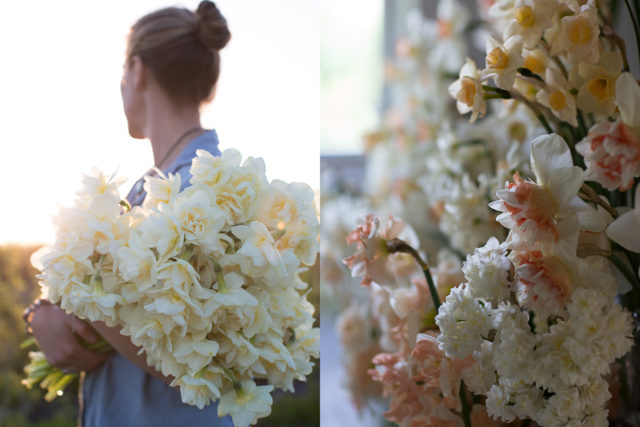 Of all the trials we’ve conducted over the years, this was hands down my favorite. The variation in this group of plants is mind boggling, from teeny tiny fragrant multi headed blossoms to big ruffly blooms that look more like peonies.
Of all the trials we’ve conducted over the years, this was hands down my favorite. The variation in this group of plants is mind boggling, from teeny tiny fragrant multi headed blossoms to big ruffly blooms that look more like peonies.
Flowers come in a vast range of shades including white, ivory, buttercream, apricot, yellow, and gold. I found myself jumping up and down every time a new variety bloomed in the field.
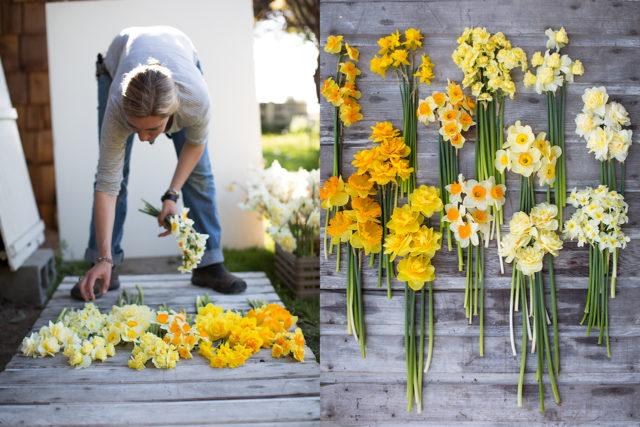 This narcissus trial, while incredibly fun, was also an enormous amount of work. The process of documenting each variety in both words and images was a time consuming task.
This narcissus trial, while incredibly fun, was also an enormous amount of work. The process of documenting each variety in both words and images was a time consuming task.
We found ourselves laughing more than once about “living the dream” while bundled up in multiple layers of down coats, shivering with frozen fingers frantically taking notes and pictures.
But the effort was absolutely worth it and we discovered so many gems in the process that we can’t wait to share with you.
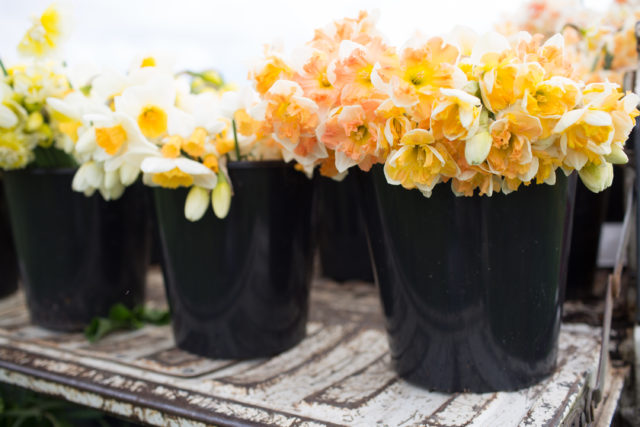 Daffodils have a bad rap. The mention of the word instantly conjures up visions of giant school bus yellow flowers that punctuate the landscape in early spring.
Daffodils have a bad rap. The mention of the word instantly conjures up visions of giant school bus yellow flowers that punctuate the landscape in early spring.
But the varieties we trialed are in a class of their own. Many were ruffled, fragrant and could easily be mistaken for peonies or garden roses.
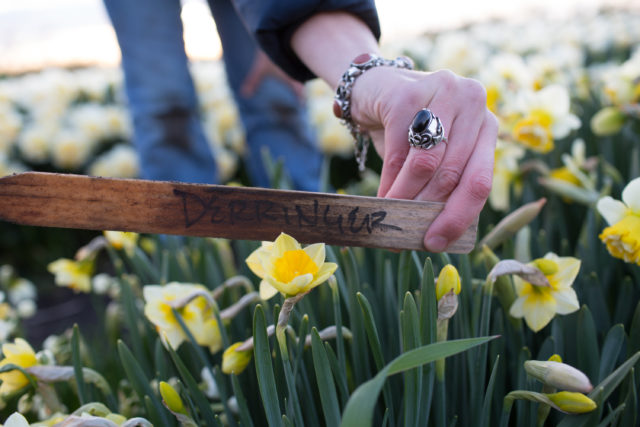 Our trial was focused on varieties that held up well to early spring weather, possessed unique coloring or form, were fragrant if at all possible, and had strong stems that were suitable for flower arranging.
Our trial was focused on varieties that held up well to early spring weather, possessed unique coloring or form, were fragrant if at all possible, and had strong stems that were suitable for flower arranging.
Narrowing the big list of 70+ varieties felt nearly impossible, but in the end we settled on 38.
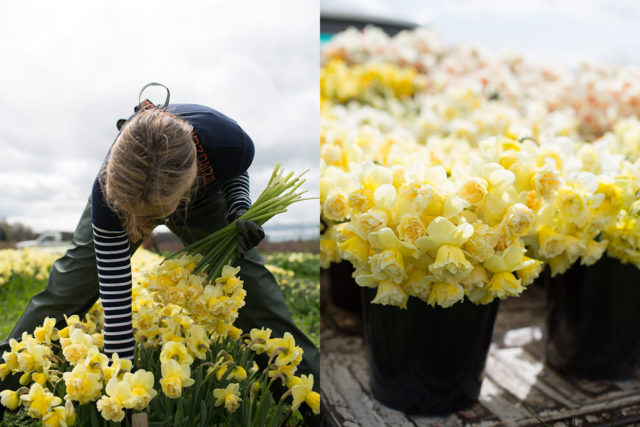 In addition to being beautiful and weather-resistant, daffodils are also extremely hardy and can handle very cold temperatures, the deer don’t eat them, and they come back year over year, multiplying over time.
In addition to being beautiful and weather-resistant, daffodils are also extremely hardy and can handle very cold temperatures, the deer don’t eat them, and they come back year over year, multiplying over time.
They are low maintenance, seemingly thrive off neglect and couldn’t be easier to grow.
What’s not to love!?
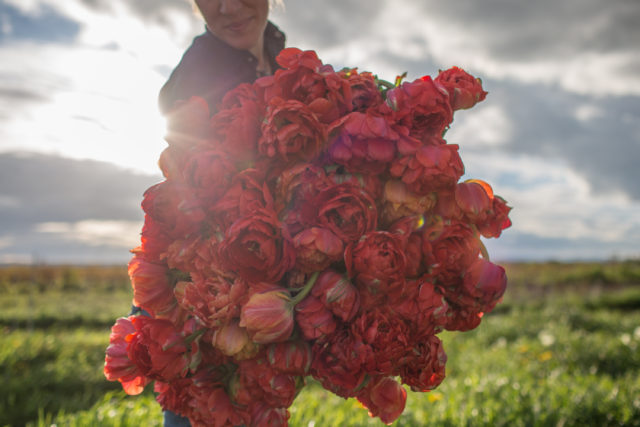
Tulips
Another spring favorite here on the farm are tulips. We grow tens of thousands of them every year, bypassing the standard varieties, instead seeking out the doubles, parrots, and fringed beauties.
Over the years, we’ve trialed nearly 100 varieties, but consistently come back to two dozen hard working favorites. Tulips come in a dazzling rainbow of colors, are extremely easy to grow, and make a wonderful long lasting addition to flower arrangements.
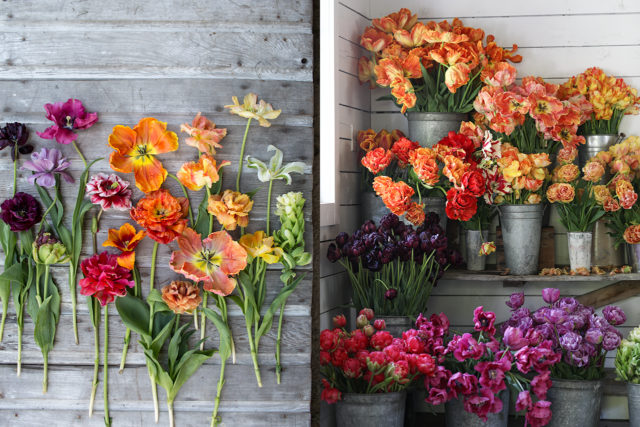 One of the great things about tulips is that you can grow a ton of them in a really small amount of space and the flowers can be harvested and stored for weeks at a time.
One of the great things about tulips is that you can grow a ton of them in a really small amount of space and the flowers can be harvested and stored for weeks at a time.
If you want to learn more about growing tulips in small spaces, be sure to check out our free Fall Mini Course. In this class, I’ll be taking students through a series of video lessons demonstrating some of the most important fall tasks to do in the garden to prepare for spring.
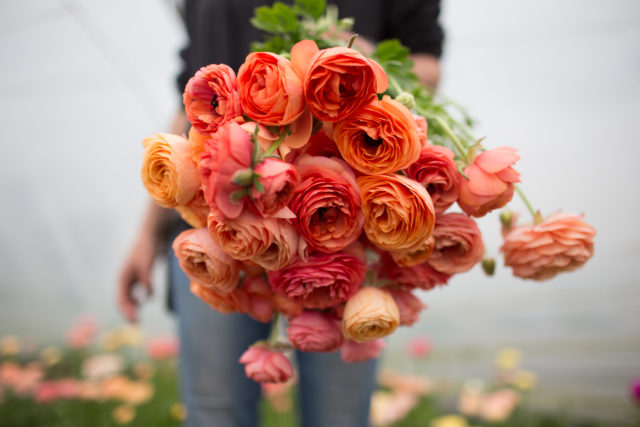
Anemones & Ranunculus
Anemones and ranunculus are two of the most popular spring flowers that we grow here at Floret. They also generate the most growing related questions because they have special requirements for success. But once you know the secrets, they are actually quite easy to grow. If you want to learn all about growing this hardworking spring favorites, sign up for our Fall Mini Course.
What makes both of these long-lasting cut flowers so amazing is that they bloom for 6-8 weeks in the spring, come in a wide range of colors, and are a novelty item for most local markets.
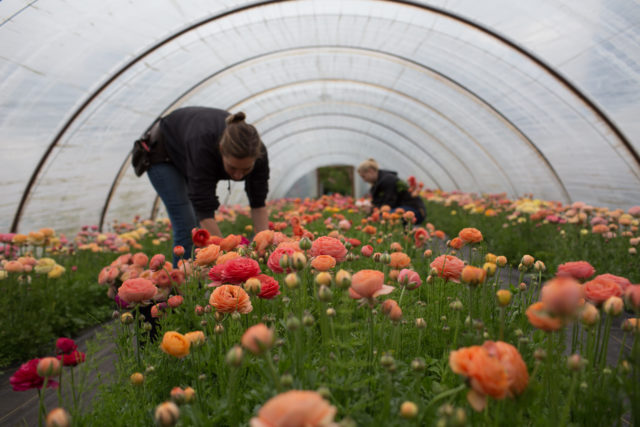
What is your favorite? Please share in the comments below. Note: blog comments are moderated to prevent spam, so if your comment doesn’t appear right away, just hang tight!
Thank you all for sharing your favorites!

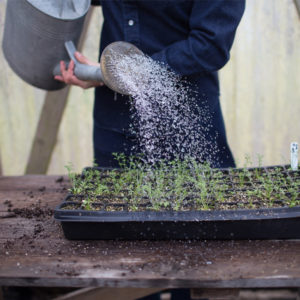

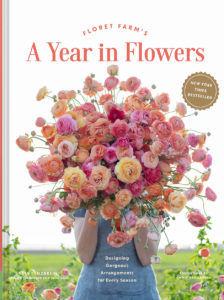
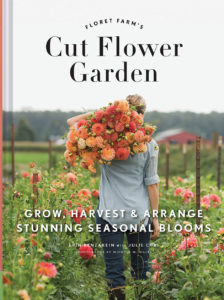


Alis Bec on
Great post. Love it. But as I am a beginner, I would like to have a post that helps me the beginner level first and then move on to this. I was searching for something like that and found this amazing post: https://backyardmashpersonal.simplesite.com/
It might help other beginners like me as well.